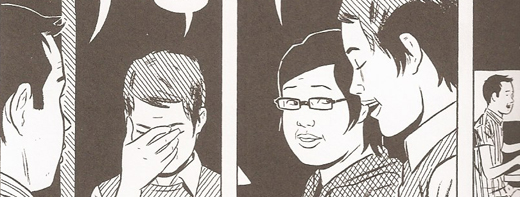Reading Note: Shortcomings
I’ve admired Adrian Tomine’s drawings in The New Yorker for years, but it was only recently that I gave a thought to reading one of his books. Which is to say one of his works of graphic fiction. I’m not sure that I know how to read graphic fiction yet, but at least I’ve begun to read it again. (The first couple of titles that I looked into, which will go nameless, bored me silly.) It’s much easier to figure out how to read something if you try reading it.
Is it still important to argue that a given work accomplishes things in the artist’s chosen medium that could not be achieved in any other? The question is particularly electric for graphic fiction because of its resemblance to the storyboard. I suppose that someday there will be an exhibit of Alfred Hitchcock’s famed storyboards (in which the sequence of important scenes was carefully laid out before shooting began), and we will ooh and ah not only at the Master’s wizardry but at the rich possibilities of a “neglected” format.
But storyboards are sketches that resolve themselves into a very different completed work (the film). At the same time they are not sketches in quite the same way that Raphael’s drawings are sketches. The validity, or the authenticity, or the what-am-I-looking-for? of graphic fiction depends upon its insolubility. The material would have to have some quality that could not be improved if it were pressed into either a novella or a film.
That’s the quality that I’m looking for. And I think I’ve brushed against it in Shortcomings. I won’t reproduce it here, but the last frame on page 28 (Miko regards Ben with tired reproach, but says nothing) almost stung me. In a film, the image would pass immediately.* No amount of text could capture Miko’s expression. So I’m getting something that I couldn’t get in another way.
All of which seems both precious and academic, given the wit of Mr Tomine’s characters. I don’t think I’d care to have the foregoing evaluated by Alice Kim!
* That I could go to the trouble of converting my favorite films into graphic novels is certainly interesting to think about. I expect that copyright law is the only thing that has kept rotoscopers from turning them out.

